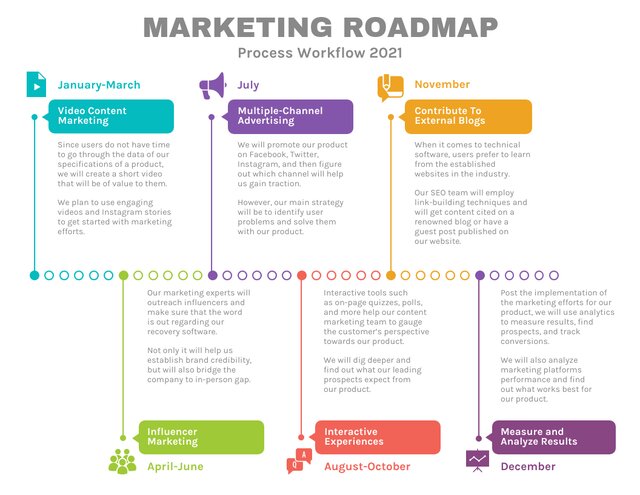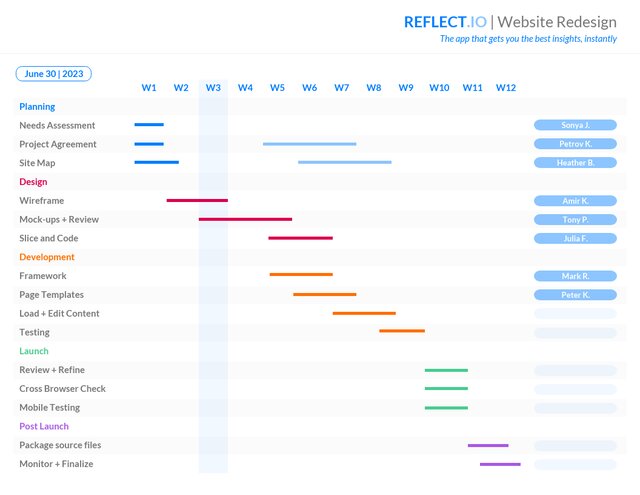“I think you’re on mute.”
“Can you see me? I can’t see you.”
“Your voice is breaking up. Can you say that again?”
How many times have you heard or said these phrases (and the like) in the last few months?
With most companies across the world working remotely, we can all agree that workplace communication has undergone a massive shift in the recent past.
But is it as straightforward as replacing face-to-face meetings with emails and communication tools? Not quite.
Whether you’re trying to set expectations, communicating strategy, or providing feedback — in addition to what you say, virtual team communication needs you to also focus on how you say it.
Let’s take a look at the six key steps leaders can take to avoid miscommunication while managing a remote team.
1. Establish clear communication guidelines
Imagine sending a company-wide announcement via an instant messaging app or asking for a project update through email. In both scenarios, the message is likely to get lost because the communication channel is clearly not appropriate for the kind of communication.
Instead of confusing your remote workers, establish clear communication guidelines that define:
- Communication channels your company uses
- Purpose of every communication channel
- Rules of participation
- Expectations in terms of responses
Broadly, there are two types of communication in a remote environment:
- Synchronous: real-time communication (e.g. video conferencing, instant messaging apps, etc.)
- Asynchronous: people can respond when they’re available (e.g. emails, project management tools, etc.)
It’s a good idea to use a mix of both. The choice boils down to the nature of your business, communication objectives, and the time zones your team is in.
For example, a fully remote company such as Buffer recommends asynchronous communication.
While they do use real-time communication for urgent situations and relationship building, they say, “real-time meetings can create communication that isn’t as inclusive as we would like.
It can be difficult for the full team to participate in and feel heard. If one person dominates the conversation, it’s harder for others to jump in.”
2. Keep your message simple and direct
The key to effective communication is keeping it simple and direct. This becomes all the more important when you’re communicating with a distributed workforce.
Remember: being direct does not give you the leeway to be rude.
Direct communication is about coming straight to the point and getting your message across clearly. Stick to actionable information and tailor your message to your audience.
For example, if you’re communicating a high-level strategy to your team, focus on the main objective and high-level milestones. You can get into more specific details when communicating with smaller teams or individuals.
In addition to this, the founder of Lulemon, Chip Wilson, stresses the importance of specifying clear conditions.
“Leaving a request open-ended is tempting for people who fear coming across as too bossy or demanding, or for listeners who don’t want to be held responsible to meet set conditions or deadlines,” he writes in a Forbes article.
3. Use visual communication
Would you rather listen to a speech on new company policies or read a fun infographic explaining the same?
It’s most probably going to be the latter.
That’s because visuals have the power to engage, educate and motivate people. What’s more, according to a study, communicating with visuals also helps improve retention.
Here are some ways to use visual communication in your remote workplace:
- Use icons and infographics to make technical information easier to understand
- Communicate company process changes with diagrams and mind maps
- Create presentation slides to sum up action points after virtual meetings
- Provide checklists to help your team keep track of their tasks
In short, visuals help you improve virtual team communication without overwhelming people with too much information. They bring consistency in communication, ensuring everyone in the team is on the same page.
Take a look at this process diagram that breaks down processes into smaller steps, making it easier to understand and grasp. It lets you communicate high-level concepts and specific details in the same place, leaving no room for confusion.

Source: Venngage
4. Document deadlines and expectations
You don’t want to be in a place where poor communication on your part leads to missed deadlines, conflict and dissatisfied employees.
What’s more, in a remote environment with people working in different timezones, the chances of being misunderstood are certainly higher.
How do you avoid that? By documenting deadlines and expectations.
You can create a timeline infographic or Gantt chart to demonstrate the responsibilities of each team member and their deadlines. This works as a reference document and promotes greater alignment in the team.
Here’s an example of a Gantt chart that accurately outlines the different tasks, people responsible and respective timelines. Notice how the tasks are color-coded for each department.

Source: Venngage
5. Regularly check-in with your team
While remote working has its set of perks, one can’t deny that it can also get very lonely.
Unlike a traditional set-up, you don’t get to see each other that often but out of sight should not translate into out of mind.
As the manager or team leader, it’s your responsibility to ensure your team feels included and heard, regardless of where they work.
This is why it’s important to regularly check-in with your team members through daily or weekly meetings. The objective is to get an overview of their progress and address their challenges.
Make sure these meetings are agenda-driven so that everyone comes prepared and you get more done as a team.
Entrepreneur suggests three meetings companies must have with their remote workforce:
- An initial meeting where you go over the processes and procedures your remote teams
- A regular weekly or bi-weekly meeting with a published agenda
- An optional one-on-one meeting slot to touch base with employees individually
While you don’t want your team to be in meetings all day, these timely check-ins ensure everyone is on the right track and feels involved.
6. Cultivate a sense of community
Maintaining positive company culture is known to boost team morale, encourage team collaboration and improve productivity.
When you work towards building a strong remote work culture and cultivating a sense of community, you automatically open the doors for communication. It gets easier for team members to communicate more openly with each other, leaving little or no room for misinterpretation.
In spite of not being around each other, taking conscious steps to establish connections that result in overcoming communication barriers.
Here are some ways to cultivate a sense of community in your remote team:
- Trust your team members to get their job done and avoid micromanaging
- Recognize employees for their hard work
- Make time for informal conversations through a dedicated Slack channel
- Host bi-weekly or monthly remote team building activities
Taking these small steps will help you come closer as a team and create a sense of belonging, which is essential for remote work success.
The takeaway: improve virtual team communication for better collaboration
Remote or not, effective communication leads to happier and more satisfied employees.
As a leader, you need to make a conscious effort to ensure you’re communicating clearly and every team member feels included.
These six tactics will certainly help you enhance virtual team communication while boosting employee morale and collaboration in the process.


